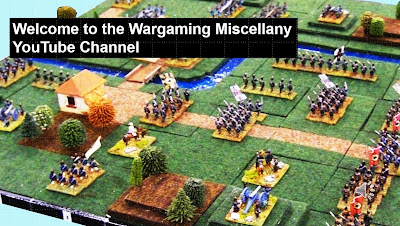I suspect that amongst most wargamers in the United Kingdom – and possibly beyond its shores – the Battle of Waterloo is a battle that they may have hankered to refight at some time. Like Hastings, Agincourt, and Trafalgar, the battle marks one of those points in our country’s history which somehow seem to define us as a nation. (There are other more recent ones that I could have added but I did not want this to be a list of battles lost and won.)
There are so many different wargames out there that seek to recreate the Waterloo campaign or the final climatic battle that by studying them, one is inevitably going to examine the almost endless variety of methods and mechanisms that wargame designers have used to create their wargames of the battle. Professor Charles Esdaile has done this in his recent book WARGAMING WATERLOO … and it is – in my humble opinion – a tour de force that should be essential reading for anyone who likes to think of themselves as a wargame designer. Its analysis may be based on the way wargame designers have designed their wargames about this one specific battle but it applies an analytical approach that could – and possible should – be applied to other wargame designs.
If wargaming wants to be treated as a serious academic pursuit, this book points the way in which this can be achieved. It is therefore of no great surprise that Professor Esdaile’s book has been published by the US Marine Corps, an organisation that takes its wargaming very seriously. (The publisher is actually the Marine Corps University Press.)
The book is divided into the following parts:
- Foreword (by Tony Pollard, Professor of Conflict History and Archaeology, University of Glasgow, field director of Waterloo Uncovered, and prime organiser of the huge refight of the battle in Glasgow in June 2019.)
- Preface
- Chronology of Events, February – July 1815
- Chapter 1: The History and Development of Wargames
- Chapter 2: The Waterloo Campaign and the Battle
- Chapter 3: The March of the Miniatures: Fighting Waterloo with Model Soldiers
- Chapter 4: How Many Hexes to Hougoumont? Waterloo by Board Game
- Chapter 5: Historical Hexagons (1): Grand Tactics
- Chapter 6: Historical Hexagons (2): Operations
- Chapter 7: Historical Hexagons (3): Strategy
- Chapter 8: Historical Hexagons:(4): Fantasy
- Conclusion: Some Thoughts on the Wargame as a Research Tool
- Appendix A: Suggested Amendments for Napoleon at Waterloo
- Appendix B: A Ludography of Waterloo
- Bibliography
- Index
- About the Author
The first chapter contains an excellent summary and is – in my humble opinion – in itself worth the cost of the book. It does have a bias towards the ways in which this particular battle has been wargamed over the years, but this in no way detracts from its excellent examination of the history of wargaming.
The following chapter gives a first-rate description of the battlefield and includes short history of the events leading up to the battle as well as a blow-by-blow account of the fighting, and the third chapter examines the pitfalls inherent in the use of miniatures for such a refight and is reminiscent in places of the case against toy soldiers propounded by the late, great Dr Paddy Griffith.
The remaining five chapters look at the ways in which the battle – and the campaign leading up to it – have been modelled using gridded board wargames.
The concluding chapter puts forward a very convincing argument as to why properly designed wargames can be a valuable research tool. Towards the end of the chapter Professor Esdaile quotes from Robert M Citino's contribution to ZONES OF CONTROL: PERSPECTIVES ON WARGAMING, which was published in 2016 by MIT Press. In it, Citino suggests that a military historian who seeks to better understand a war, a campaign, or a battle should fight a wargame about it. To this I would add that getting them to design the wargame would be an even better route to achieving that understanding!
As I stated above, in my opinion this book is a tour de force and I thoroughly recommend it to anyone who considers themselves to be a wargame designer.
WARGAMING WATERLOO was written by Professor Charles J Esdaile and published by the Marine Corps University Press (ISBN 979 8 9865 2944 4). It is available as a free download via www.usmcu.edu/mcupress.

































.jpg)









